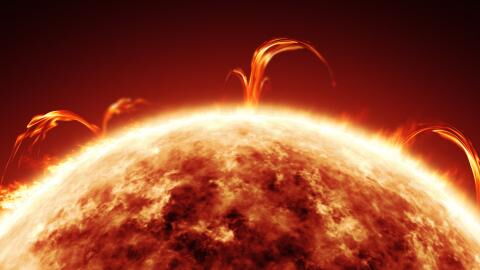The sun is fascinating. The Earth rotates around the sun as it shines a light on us. But that isn’t all that it does. It can also create solar flares and sunspots, but what exactly are these?
Discover our latest podcast
A massive sunspot
As reported by Newsweek, an ‘enormous sunspot’ has doubled in size. It was first spotted on Sunday, June 19, and by Monday, it had doubled its size. The sunspot is now facing the Earth.
NASA defines a sunspot as:
Areas that appear dark on the surface of the Sun
They go on to explain that the reason these areas appear darker than the rest is that they are ‘cooler’ than the areas around them.
Sunspots often form on areas of the sun where its magnetic fields are ‘particularly strong’ to the point where they prevent the heat within the sun from reaching the surface.
A giant sunspot the size of 3 Earths is facing us right now https://t.co/nlcWzVSsjKpic.twitter.com/Z8ZZRB88tE
— SPACE.com (@SPACEdotcom) June 22, 2022
Could turn into solar flares
According to NASA, this particularly big sunspot is now facing the Earth and may turn into solar flares.
NASA defines solar flares as:
A sudden explosion of energy caused by tangling, crossing or reorganizing of magnetic field lines near sunspots
SpaceWeather website wrote on June 22:
Yesterday, sunspot AR3038 was big. Today, it's enormous
The fast-growing sunspot has doubled in size in only 24 hours.
So far the National Oceanic and Atmospheric Administration's Space Weather Prediction Center (SWPC) hasn't issued any solar flare warnings.
Read more:
⋙ Astronomy: Beginner's guide to get started
⋙ An asteroid 5 times bigger than the Empire State Building will graze the Earth















